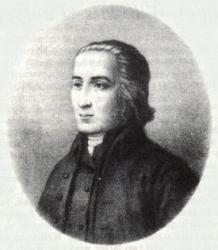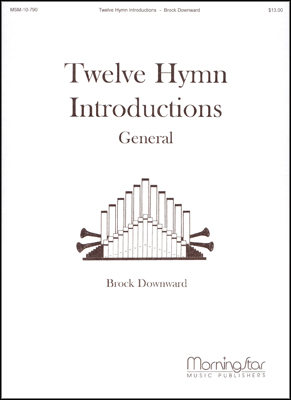- |
User Links
Arglwydd arwain trwy'r anialwch
Arglwydd arwain trwy'r anialwch
Author: William WilliamsPublished in 6 hymnals
Audio files: MIDI
Representative Text
1 Arglwydd, arwain trwy’r anialwch,
Fi, bererin gwael ei wedd,
Nad oes ynof nerth na bywyd
Fel yn gorwedd yn y bedd:
Hollalluog, hollalluog
Ydyw’r Un a’m cwyd i’r lan,
Ydyw’r Un a’m cwyd i’r lan.
2 Colofn dân rho’r nos i’m harwain,
A rho golofn niwl y dydd;
Dal fi pan bwy’n teithio’r mannau
Geirwon yn fy ffordd y sydd:
Rho imi fanna, rho imi fanna,
Fel na bwyf yn llwfwrhau,
Fel na bwyf yn llwfwrhau.
3 Agor y ffynhonnau melys
Sydd yn tarddu o’r graig y maes,
’R hyd yr anial mawr canlyned
Afon iechydwriaeth gras,
Rho imi hynny, rho imi hynny,
Dim imi ond dy fwynhau,
Dim imi ond dy fwynhau.
4 Pan fwy’n myned trwy’r Iorddonen—
Angau creulon yn ei rym,
Ti est trwyddi gynt dy Hunan,
P’am yr ofnaf bellach ddim?
Buddugoliaeth, buddugoliaeth,
Gwna imi weiddi yn y llif,
Gwna imi weiddi yn y llif!
5 Ymddiriedaf yn dy allu,
Mawr yw’r gwaith a wnest erioed:
Ti gest angau, ti gest uffern,
Ti gest Satan dan dy droed:
Pen Calfaria, en Calfaria,
Nac aed hwnnw byth o’m cof,
Nac aed hwnnw byth o’m cof.
Source: The Cyber Hymnal #13417
Author: William Williams
 William Williams, called the "Watts of Wales," was born in 1717, at Cefn-y-coed, near Llandovery, Carmarthenshire. He originally studied medicine, but abandoned it for theology. He was ordained Deacon in the Church of England, but was refused Priest's Orders, and subsequently attached himself to the Calvinistic Methodists. For half a century he travelled in Wales, preaching the Gospel. He died in 1791. Williams composed his hymns chiefly in the Welsh language; they are still largely used by various religious bodies in the principality. Many of his hymns have appeared in English, and have been collected and published by Sedgwick. His two principal poetical works are "Hosannah to the Son of David," and "Gloria in Excelsis."
--Annotati… Go to person page >
William Williams, called the "Watts of Wales," was born in 1717, at Cefn-y-coed, near Llandovery, Carmarthenshire. He originally studied medicine, but abandoned it for theology. He was ordained Deacon in the Church of England, but was refused Priest's Orders, and subsequently attached himself to the Calvinistic Methodists. For half a century he travelled in Wales, preaching the Gospel. He died in 1791. Williams composed his hymns chiefly in the Welsh language; they are still largely used by various religious bodies in the principality. Many of his hymns have appeared in English, and have been collected and published by Sedgwick. His two principal poetical works are "Hosannah to the Son of David," and "Gloria in Excelsis."
--Annotati… Go to person page >Text Information
| First Line: | Arglwydd arwain trwy'r anialwch |
| Author: | William Williams |
| Language: | Welsh |
| Copyright: | Public Domain |
English
Welsh
- Cân a Mawl: llyfr hymna a thonau Methodistiaid Calfinaidd Unol Dalaethau yr America=Song and Praise: the hymnal of the Calvinistic Methodist Church of the United States of America #207
- Hymnau a thonau at wasanaeth amrywiol gyfarfodydd y cysegr #259
- Mawl a chân = praise and song : llyfr hymnau a thonau i Gymru ar Wasgar = hymnal for Welsh and English church worship / crynhoad pwyllgor Eglwys Gymraeg, Detroit, Michigan #132a
- Old and New Welsh and English Hymns #115
- The Cyber Hymnal #13417
- Welsh and English Hymns and Anthems #40
Notes
Arglwydd arwain trwy'r anialwch. W. Williams. [Strength to pass through the Wilderness.] This was published in the first edition of the author's Alleluia, Bristol, 1745, in 5 stanzas of 6 lines. The first translation of a part of this hymn into English was by Peter Williams, in his Hymns on Various Subjects (vii.), Together with The Novice Instructed: Being an abstract of a letter written to a Friend. By the Bev. P. Williams, Carmarthen, 1771, Printed for the author.
W. Williams himself adopted the translation of stanza i., ii., iii. and iv. into English, added a fourth stanza, and printed them as a leaflet as follows:—
"A Favourite Hymn,
sung by
Lady Huntingdon's Young Collegians.
Printed by the desire of many Christian friends.
Lord, give it Thy blessing.i.
“Guide me, 0 Thou great Jehovah,
Pilgrim through this barren land;
I am weak, but Thou art mighty,
Hold me with Thy pow'rful hand:
Bread of heaven, bread of heaven,
Feed me till I want no more.ii.
"Open now the chrystal fountain,
Whence the healing stream doth flow;
Let the fire and cloudy pillar
Lead me all my journey thro:
Strong Deliv'rer, strong Deliv'rer,
Be Thou still my strength and shield.iii.
"When I tread the verge of Jordan,
Bid my anxious fears subside;
Death of deaths, and hell's destruction,
Land me safe on Canaan's side:
Songs of praises, songs of praises
I will ever give to Thee.iv.
"Musing on my habitation,
Musing on my heav'nly home,
Fills my soul with holy longings:
Come, my Jesus, quickly come;
Vanity is all I see;
Lord, I long to be with Thee!"
This leaflet was undated, but was c. 1772. During the same or the following year, it was included in the Lady H. Collection, 5th ed., Bath, W. Gye, No. 94. Stanzas i.-iii. had previously appeared in The Collection of Hymns sung in the Countess of Huntingdon's Chapels in Sussex. Edinburgh: Printed by A. Donaldson, for William Balcombe, Angmoring, Sussex, No. 202. This is undated; but Mr. Brooke's copy contains the autograph, "Elizabt. Featherstonehaugh, 1772," the writing and ink of which show it to be genuine. We can safely date it 1771. It was repeated in G. Whitefield's Psalms & Hymns, 1773; inConyers, 1774, and others, until it has become one of the most extensively used hymns in the English language.
This hymn in one form or another has been rendered into many languages, but invariably from the English. These translations included the Bev. B. Bingham's rendering into Latin, "Magne tu, Jehova," of the 3 stanza arrangement, given with the English text, in his Hymnologia Christiana Latina, 1871.
--Excerpts from John Julian, Dictionary of Hymnology (1907)
Tune
CWM RHONDDAThe popularity of Williams's text ("Guide me, O thou great Jehovah") is undoubtedly aided by its association with CWM RHONDDA, composed in 1905 by John Hughes (b. Dowlais, Glamorganshire, Wales, 1873; d. Llantwit Fardre, Wales, 1932) during a church service for a Baptist Cymanfa Ganu (song festival)…
CAERSALEM
CAPEL-Y-DDÔL


 My Starred Hymns
My Starred Hymns






